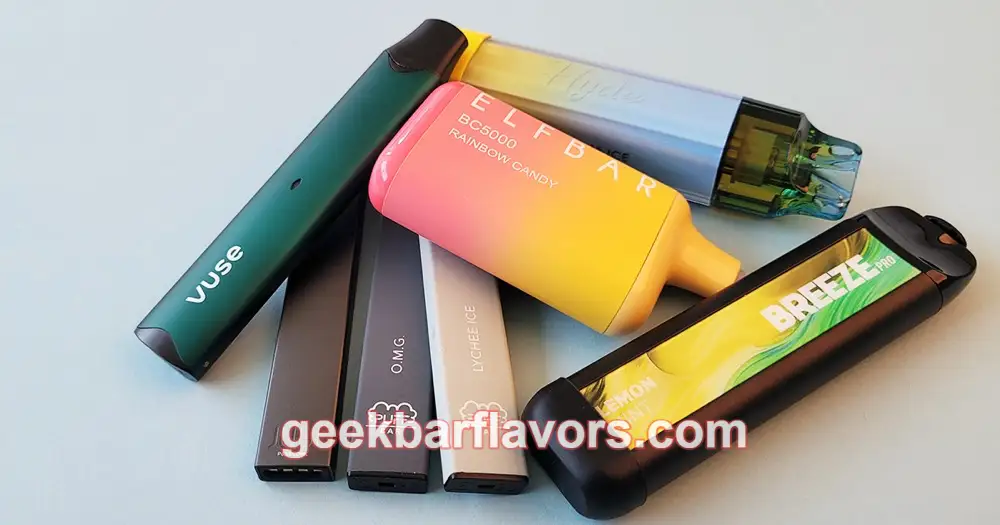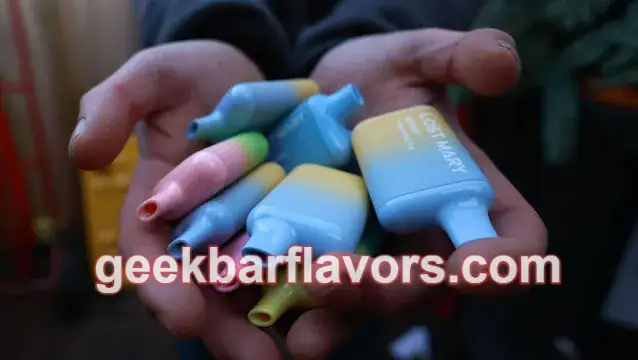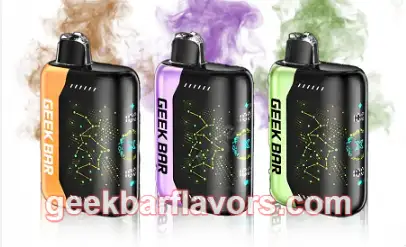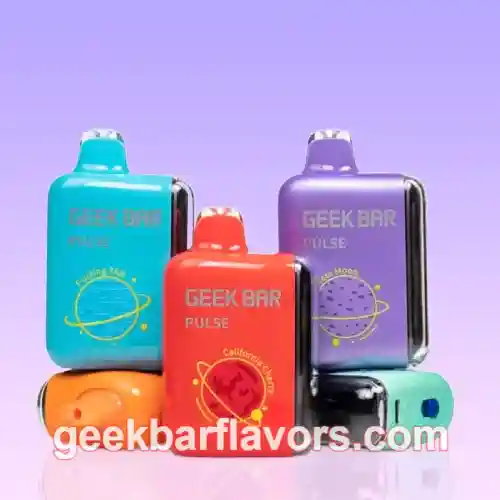The Hidden Truth Behind Vape Puff Counts: Who's Protecting Consumer Interests?
In recent news, editors at 2FIRSTS purchased a disposable vape in the U.S. market claiming to contain 16 milliliters of vape juice, boasting an impressive 15,000 puffs on the label. However, after testing the product, the actual puff count was barely 3,000 puffs—a significant discrepancy. This raised the question: Why do so many vapes claim to provide a far higher puff count than they actually deliver? And who is watching out for the consumers?
Puff Count Fiasco: A Growing Problem
This isn't an isolated incident. Industry insiders confirm that puff count misrepresentation is rampant across the vape market. In fact, the puff count issue has reached such a level of regularity that it's almost become an unspoken rule in the industry. It's not just an issue with low-end brands; even some well-established names aren't immune.
The reason behind this puff count exaggeration is simple: competition. With so many vape products flooding the market, brands want to stand out, and what better way to do that than by advertising higher puff counts? It's a numbers game—consumers often make purchasing decisions based on the number of puffs, so marketers are keen to inflate these numbers. And when a vape company’s technical capabilities can't back up these claims, they turn to a little creative math to stay competitive.
What's Really Going On?
In the U.S., puff count is the primary way vapes are marketed. Instead of measuring by the number of cigarettes (like with traditional smokes), the vape industry uses "puffs" as a unit of measurement. The problem arises because puff count can vary significantly depending on the testing conditions, such as the length of the drag, airflow, and other variables.
In most laboratories, a standard test measures puffs based on a 3-second drag with a 55mL air draw. Under these conditions, a 2mL vape cartridge generally yields about 200 puffs. However, many brands advertise their products as capable of 600 or even 800 puffs under those same parameters. Sounds like a good deal, right? The problem is that real-life vaping habits don’t follow those laboratory conditions—people tend to take longer, deeper drags with higher airflow, which leads to significantly fewer puffs.
Take, for example, the Geek Bar Fcuking Fab Flavor, which boasts a rich combination of fruity and minty flavors in a sleek, easy-to-use design. Users often report that despite its higher puff count claims, the real-world experience is less than advertised, though still satisfying. The disparity between advertised and actual puffs is just another reminder that consumers need to be aware and skeptical of marketing gimmicks.
Puff Count Fiction: A Sneaky Trend
This puff count misrepresentation is nothing new. Back in 2021, Puff Bar, a popular brand in the disposable vape market, was hit with a class-action lawsuit over false puff count claims. Consumers argued that despite the brand’s claims of 800 puffs, their products didn’t even come close to that number. Puff Bar admitted that technical issues contributed to the discrepancy but failed to provide adequate warning to customers. This lawsuit didn’t make much of a dent in the industry, though. In fact, some argue that puff count misrepresentation has only worsened since then.
According to one vape industry expert, puff count inflation has become a "secret rule" in the industry. "If you don’t inflate your puff count, you can’t compete," they said bluntly. "It’s a survival tactic."
The issue is pervasive in the U.S., especially on major vaping retail platforms like Demandvape. A quick scan of their listings reveals that the puff counts on many disposable vapes are far higher than what consumers will actually experience. In fact, the actual puff count tends to be about half of what’s advertised—yet this remains an open secret in the industry.
The High Stakes of False Claims

Why is the puff count game so critical? Because higher puff counts often come with higher price tags. Brands that tout 8,000 puffs on a single device can sell their products for a premium. Some lesser-known brands try to level the playing field by marking up puff counts to compete with the big guys, even though their products can’t deliver. The result is a market flooded with inflated claims, which can lead to consumer frustration and skepticism.
Even though experienced vapers can usually tell when a product's puff count is off, many buyers still rely on the number as a deciding factor when making a purchase. Some even use vape juice capacity as a rough guideline—expecting that a 10mL vape might provide more puffs than a 5mL one, for example. But that’s often not the case. The same expert we spoke to mentioned that the "normal" expectation is for puff counts to be at least half of what’s claimed.
Additionally, some vapes are found to have overfilled vape juice, which makes it seem like the product has more puffs than it really does. A popular vape brand in Europe had their products tested, and it was found that their devices had a greater juice capacity than advertised but were marked with lower puff counts to avoid regulatory scrutiny.
The Economics Behind the Lies
So why does this puff count misrepresentation persist? In short, it’s about money. Vape companies know that consumers are often drawn to products with higher puff counts, and if they can't back up those claims with superior technology, they inflate the numbers to stay competitive. In a marketplace driven by quick sales and consumer attention, honesty about puff count just doesn't pay off.
In fact, according to some insiders, it’s so commonplace that one industry veteran casually admitted, "Everyone inflates the puff count. You can’t survive in this market if you don’t." It's a vicious cycle where consumers lose, and brands are incentivized to play the same game.
For example, if you're choosing between a well-known brand and a new, up-and-coming competitor, you might be tempted to buy the cheaper option because it claims more puffs. Brands like the Geek Bar have built reputations based on delivering excellent flavor and reasonable puff counts, making them popular choices. The GEEK BAR 2025 Best Sale Flavor is a perfect example of a product that combines solid performance with great taste—although, even with their stellar reputation, some customers may still feel skeptical about the puff count.
The Need for Consumer Protection
Ultimately, the biggest losers in this puff count game are the consumers. When vape manufacturers mislead customers about the number of puffs, it’s not just an innocent mistake; it’s a deliberate action designed to maximize profit. Unfortunately, for many vapers, there’s little recourse for dealing with these misleading claims. The lack of clear, standardized testing for puff counts and the absence of strict consumer protection laws only serve to exacerbate the problem.
Many vapers have voiced their dissatisfaction on social media, with some even calling for legal action to hold manufacturers accountable for false claims. However, without robust oversight or a legal framework to protect consumers, these voices often go unheard.
In markets like the U.S., where vaping is still in a regulatory gray area, it’s difficult for consumers to assert their rights. Unlike the food industry, where mislabeling can result in fines and legal consequences, vape companies face much less scrutiny over puff count accuracy.
Some companies are working to remedy this situation. For instance, Geek Bar, known for its high-quality flavors like the GEEK BAR 2025 Best Sale Flavor, has started emphasizing product transparency and more accurate puff counts. However, until the industry as a whole adopts stricter standards, consumers will continue to be in the dark.
The Way Forward: Stronger Regulation and Consumer Vigilance

The vape industry is at a crossroads. To ensure that consumers get what they pay for, manufacturers must be held accountable for the puff counts they advertise. Stronger regulations, more transparent testing methods, and a consumer advocacy network are key to tackling this problem. Until these measures are implemented, vapers will continue to play a guessing game when choosing products.
While brands like Geek Bar work to maintain their integrity and deliver on promises of amazing flavors and decent puff counts, the industry at large needs to clean up its act. As a consumer, you deserve to know what you're actually getting, whether you’re reaching for a fruity puff of Geek Bar Fcuking Fab Flavor or trying something new. Only with better regulations and consumer protection can the industry evolve into a space where honesty and quality prevail, leaving misleading puff count claims behind.
Until then, it’s buyer beware—but with some good judgment, you can still find great vapes that live up to their promises. Just make sure to double-check those puff counts.

